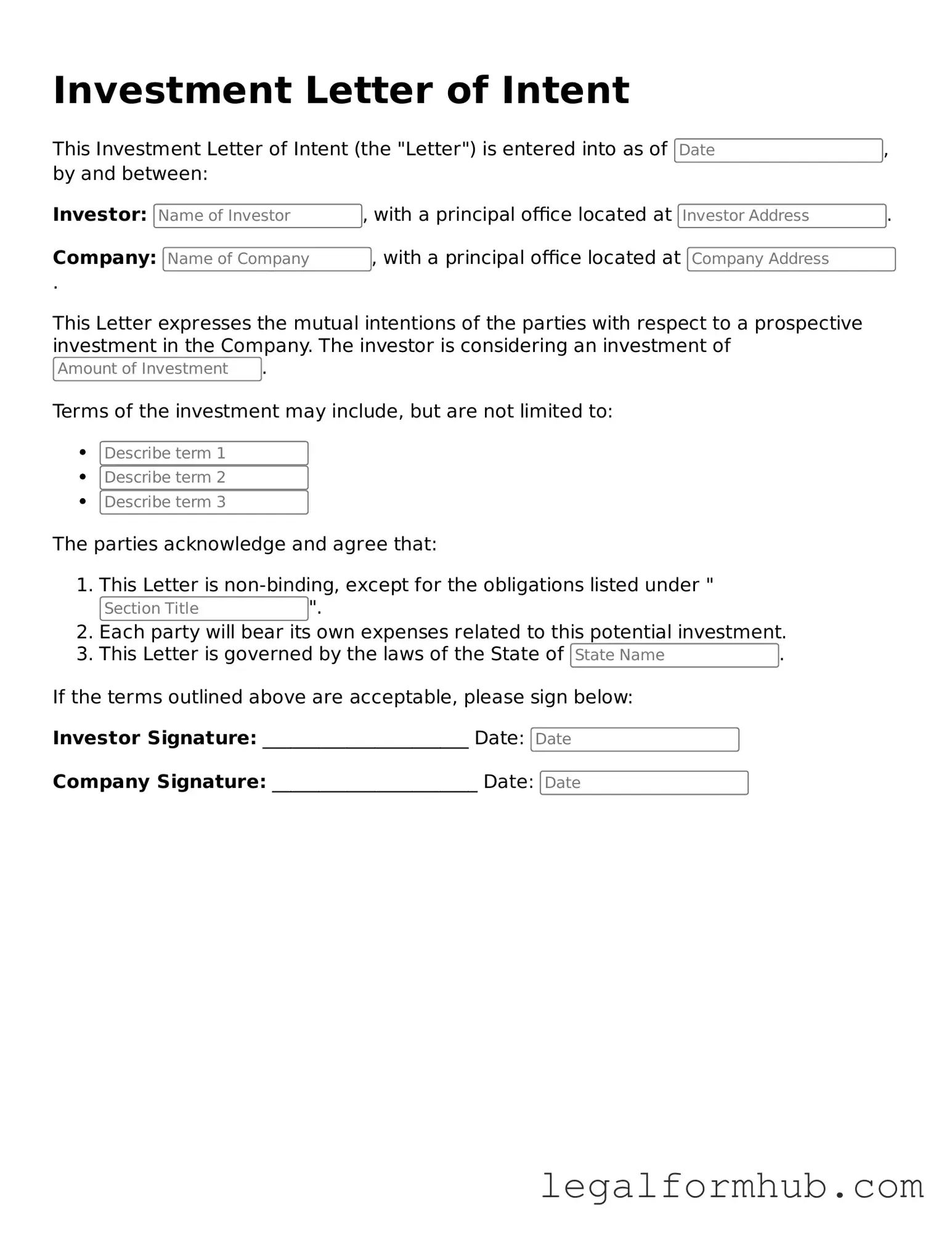The Investment Letter of Intent (LOI) serves as a preliminary agreement between parties looking to enter into a business relationship. Similar to a Memorandum of Understanding (MOU), an LOI outlines the general terms and conditions that the parties have discussed. While an MOU is often non-binding and emphasizes the intent to cooperate, an LOI can sometimes include binding clauses, particularly regarding confidentiality or exclusivity. Both documents aim to clarify expectations and set the stage for further negotiations.
Another document akin to the Investment Letter of Intent is the Term Sheet. A Term Sheet provides a summary of the key terms and conditions of an investment or acquisition deal. It is typically more detailed than an LOI and often includes specific financial terms, valuation, and other critical aspects of the deal. While both documents serve to outline the intentions of the parties involved, a Term Sheet is generally more structured and may lead directly to the drafting of a formal agreement.
A Letter of Intent in real estate transactions shares similarities with the Investment LOI. In real estate, this document outlines the buyer's intentions to purchase a property, detailing the terms of the potential sale. Like the Investment LOI, it can include contingencies and other conditions that must be met before the deal is finalized. Both documents help set expectations and provide a framework for negotiation, although the specifics may vary based on the nature of the transaction.
The Non-Binding Agreement is another document that resembles the Investment Letter of Intent. This type of agreement outlines the general understanding between parties without creating a legally enforceable commitment. It often includes terms for confidentiality and may serve as a precursor to more detailed negotiations. While the LOI can include binding elements, the Non-Binding Agreement is explicitly designed to avoid legal obligations, focusing instead on mutual understanding.
A Business Proposal often parallels the Investment Letter of Intent in terms of purpose. A business proposal outlines a plan for a project or partnership, detailing objectives, strategies, and expected outcomes. While an LOI indicates intent to negotiate, a business proposal presents a more formalized plan that can persuade the other party to consider the proposed terms. Both documents are essential for initiating discussions and laying the groundwork for future agreements.
The Joint Venture Agreement also shares common ground with the Investment Letter of Intent. This document formalizes the terms under which two or more parties will collaborate on a specific project or business endeavor. While the LOI expresses intent and outlines preliminary terms, a Joint Venture Agreement provides a comprehensive framework for the partnership, including contributions, profit-sharing, and responsibilities of each party. Thus, the LOI often serves as the first step toward a more binding joint venture arrangement.
The Confidentiality Agreement, or Non-Disclosure Agreement (NDA), can also be seen as related to the Investment Letter of Intent. While the LOI may include confidentiality provisions, an NDA is a standalone document that specifically protects sensitive information shared between parties. Both documents aim to foster trust and protect proprietary information during negotiations, ensuring that parties can discuss their intentions openly without fear of disclosure.
Finally, the Purchase Agreement bears resemblance to the Investment Letter of Intent in that both documents are crucial in the transaction process. A Purchase Agreement is a legally binding contract that outlines the terms of a sale, including price, payment terms, and other conditions. The LOI typically precedes this document, serving as an initial expression of interest that sets the stage for more detailed negotiations leading to the final Purchase Agreement.
